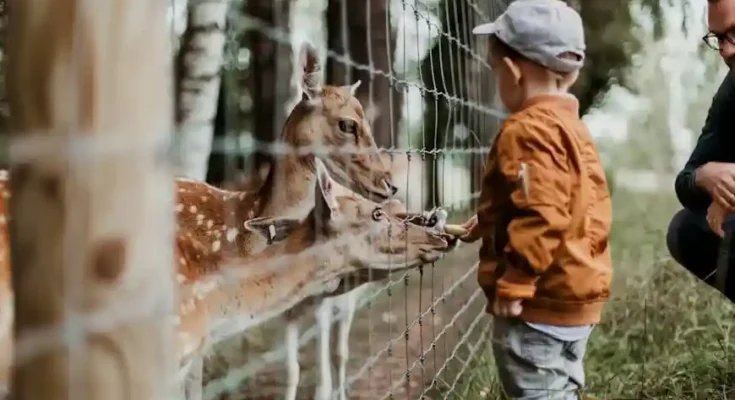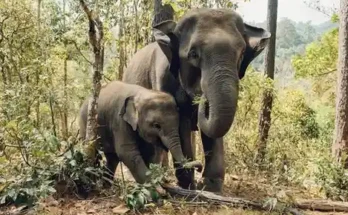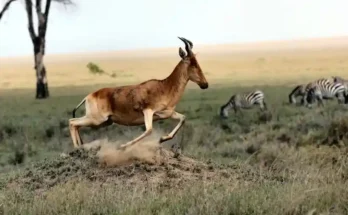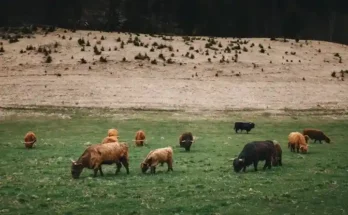The world of animals is one of the most captivating and complex systems on our planet. From the deepest depths of the oceans to the highest peaks of the mountains, life takes an incredible variety of forms. Each animal, no matter how small or seemingly insignificant, plays a vital role in the ecological balance of Earth. This journey into the animal kingdom will explore the diversity, intelligence, survival tactics, and sheer beauty of the creatures we share our world with.
Understanding the Animal Kingdom:
Animals are a diverse group of organisms that range from single-celled protozoa to massive blue whales. They differ significantly in form, function, behavior, and habitat, yet all are linked by their capacity to move, consume organic material, and react to their environment. Unlike plants, animals cannot produce their own food and must rely on other organisms for energy.
The animal kingdom is divided into several major groups, or phyla, each defined by a set of unique characteristics. Vertebrates, including mammals, birds, fish, reptiles, and amphibians, possess a backbone. Invertebrates, such as insects, mollusks, and arachnids, do not. Despite being spineless, invertebrates make up more than 95% of all animal species, showcasing nature’s creativity in evolution.
The Warm-Blooded Wonders:
Mammals are perhaps the most relatable group to us humans, not just because we belong to this class, but also due to their complex social structures, high intelligence, and parental care. From playful dolphins to secretive snow leopards, mammals exhibit a wide array of behaviors and adaptations.
- The Unseen Drama of the Wild
In the wild, survival is a daily struggle. Predators like lions, wolves, and orcas hunt with precision and cooperation, while prey animals like gazelles, rabbits, and seals rely on speed, camouflage, and keen senses to avoid becoming a meal. This balance of power keeps ecosystems in check, ensuring diversity and resilience.
- Mammalian Intelligence
Among mammals, intelligence is not a rare trait. Elephants mourn their dead, primates use tools and teach their young, and whales communicate in dialects. Even rats demonstrate memory and empathy. Such behaviors challenge long-held beliefs about the superiority of human cognition and remind us that intelligence wears many faces in the animal world.
The Masters of the Sky:
Birds are nature’s aerial artists. Their feathers, wings, and hollow bones are perfectly designed for flight. But not all birds fly. Some, like ostriches and penguins, have adapted to running and swimming, showing that flight is only one part of the avian story.
- Migration
Bird migrations are one of the most awe-inspiring phenomena in nature. Tiny hummingbirds fly thousands of miles without rest, guided by magnetic fields, stars, and instinct. These epic journeys ensure species survival and shape ecosystems across continents.
- Courtship and Song
Birds are also remarkable for their vocalizations and mating rituals. Some species, like the lyrebird, can mimic almost any sound, from other birds to chainsaws. In the breeding season, male birds often display colorful feathers or perform elaborate dances to woo potential mates. These displays are not just beautiful but are indicators of health and genetic fitness.
Reptiles and Amphibians:
Reptiles and amphibians are often overshadowed by their furred and feathered cousins, but they are marvels of evolutionary adaptation. These cold-blooded creatures have thrived for millions of years and continue to astonish scientists with their resilience.
- Masters of Camouflage
Chameleons can change color, not only to blend in but also to communicate. Frogs possess skin that reflects light in unique ways, helping them disappear in their surroundings. Crocodiles, with their prehistoric appearance, can stay submerged and motionless for hours, waiting for the perfect moment to strike.
- Environmental Indicators
Amphibians, in particular, are considered ecological barometers. Their permeable skin makes them highly sensitive to changes in the environment. Declines in frog and salamander populations often signal broader issues, such as pollution or climate change.
Insects and Arachnids:
They might be small, but insects and arachnids rule the animal world in terms of numbers. With more than a million known species (and countless more undiscovered), they are essential to life on Earth. They pollinate plants, break down waste, and form the base of countless food chains.
- The Architecture of Insects
Bees build perfect hexagonal honeycombs. Termites create towering mounds with air-conditioning systems. Spiders spin webs with silk stronger than steel. These creatures are engineers and architects in their own right, solving problems through instinct honed by millions of years of evolution.
- Social Superorganisms
Insects such as ants and bees live in highly organized societies. Roles are divided: workers, soldiers, queens. Communication occurs through chemicals, vibrations, and even dances. These colonies behave like single organisms, making collective decisions that benefit the whole over the individual.
The Oceans’ Oddities:
The oceans are home to some of the most bizarre and beautiful creatures on the planet. Bioluminescent jellyfish, deep-sea anglerfish with glowing lures, and intelligent octopuses remind us that we’ve only just begun to explore the depths of Earth’s blue heart.
- Communication Beneath the Waves
Marine animals communicate in ways unfamiliar to land dwellers. Whales sing hauntingly beautiful songs that travel miles. Dolphins click and whistle in complex patterns. Even shrimp can create shockwaves with a snap of their claw, stunning prey or predators.
- Symbiosis in the Sea
The ocean is also a place of partnership. Clownfish live in sea anemones, immune to their stings. Cleaner fish pick parasites from the skin of larger fish, gaining a meal while providing a service. These relationships highlight the interconnectedness of life, where cooperation is just as vital as competition.
The Human-Animal Connection:
Humans have always had a unique relationship with animals. From the domestication of dogs and cats to the awe we feel watching wildlife documentaries, animals inspire, comfort, and teach us.
- Animals in Culture and Myth
Around the world, animals play central roles in stories, myths, and religions. In ancient Egypt, cats were sacred. Native American tribes saw the bear as a symbol of strength. In modern times, animals are used to represent everything from sports teams to national identity, showing just how deeply intertwined they are with our perception of the world.
- Conservation and Coexistence
Sadly, many animal species are under threat due to habitat destruction, poaching, and climate change. Conservation efforts—ranging from local wildlife sanctuaries to global initiatives like the World Wildlife Fund—are essential. Learning to coexist with animals rather than dominate them is key to a sustainable future.
Conclusion:
Animals are not just part of our world; they are vital threads in the web of life. Their stories, struggles, and triumphs are reflections of nature’s power and creativity. From the ant lifting ten times its body weight to the elephant mourning its death, the animal kingdom is a source of endless fascination and inspiration.
In a world that often feels increasingly artificial and disconnected, animals remind us of what it means to be alive. They show us that beauty can be found in feathers, scales, and fur—and that life, in all its forms, is something worth protecting.




